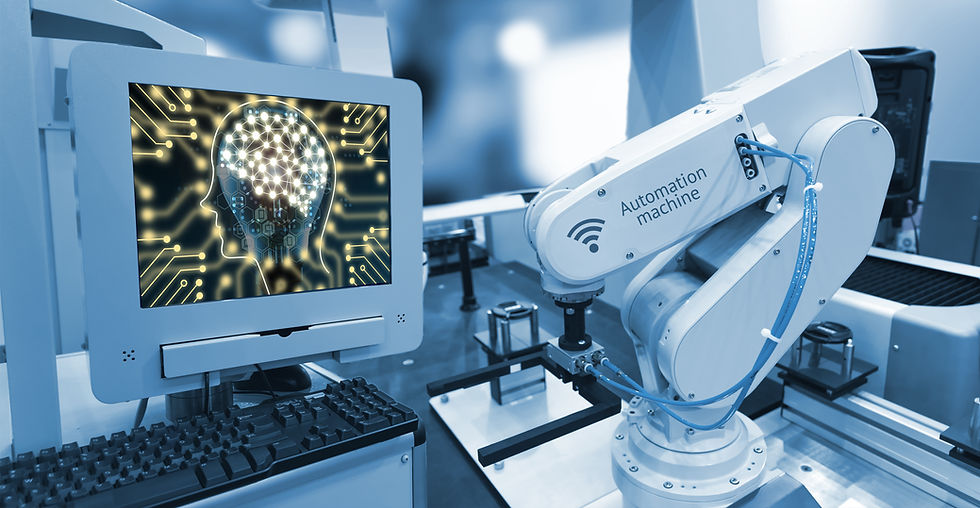Behind the Screen: How Embedded Engineers Bring Pixels to Life
- Srihari Maddula
- Mar 26, 2024
- 5 min read
Updated: Oct 14
Introduction: The Hidden Complexity Behind a Single Pixel
The seemingly simple act of viewing an image on your computer monitor involves a surprisingly complex sequence of events. Behind the scenes, multiple embedded systems components, hardware modules, and software drivers work together to translate digital information into the vibrant colors and sharp details we see on screen.
Even the display of a single pixel—the building block of every image—requires a meticulous interplay of firmware development, hardware-software integration, and embedded product design. Embedded engineers are at the heart of this process, bridging the gap between digital commands and physical display technology.
This article delves into the step-by-step journey of a pixel and highlights the crucial role of embedded engineers in IoT devices, industrial display solutions, and edge computing systems.

Deep Dive into Pixel Display: Step-by-Step
1. Application Layer
It starts when you select a color in software like Photoshop. Choosing a pixel (RGB: 255, 0, 0 for red) triggers internal commands that initiate the embedded system workflow.
2. Graphics API
The application communicates with the operating system via a graphics API (e.g., DirectX, OpenGL). These APIs convert user actions into instructions the OS can understand and relay to the embedded hardware system.
3. Operating System & Graphics Driver
The OS sends commands to the graphics driver, which translates them for the GPU. Pixel data is stored in the framebuffer, a key part of embedded display modules.
4. CPU & System Bus
The CPU orchestrates data transfer from RAM to the GPU via the system bus, a critical task in embedded systems design to ensure real-time performance and efficient edge device operation.
5. GPU & Framebuffer
The GPU processes the pixel data and prepares it for display. This step highlights the importance of hardware-software integration in embedded product design.
6. Monitor Connection & Internal Circuitry
Pixel data reaches the monitor via HDMI, DisplayPort, or other interfaces. The monitor’s embedded controller decodes the signal for accurate display.
7. Pixel Subcomponents & LCD Adjustment
Each pixel contains red, green, and blue sub-pixels. For red, the monitor activates the red sub-pixel at full intensity. The liquid crystals adjust to render the color accurately.
The Crucial Role of Embedded Engineers in Pixel Display

While the step-by-step process outlines the technical journey of a pixel, it's important to recognize the vital role played by embedded engineers in making it all happen. These skilled professionals work at the intersection of hardware and software, ensuring seamless integration and optimal performance throughout the entire process. Let's explore their contributions in detail:
Embedded engineers ensure this process is seamless, efficient, and accurate, contributing to:
1. Hardware Selection & Embedded Product Design
Selecting GPUs, LCD controllers, memory, and bus interfaces optimized for performance, power efficiency, and cost.
2. Board Bring-Up & Firmware Development
Writing low-level firmware that ensures hardware components communicate correctly, enabling IoT devices and edge computing devices to function reliably.
3. Hardware Abstraction Layer (HAL) Development
Creating a consistent interface between OS and hardware, which is crucial for embedded systems design across multiple platforms.
4. Optimization & Performance Tuning
Enhancing memory usage, reducing power consumption, and improving data transfer speeds in industrial display solutions and embedded IoT products.
5. Integration & Testing
Conducting rigorous hardware-software integration testing to ensure the entire embedded system functions flawlessly.
6. Custom Driver Development & Standards Compliance
Developing specialized drivers for proprietary hardware and ensuring adherence to industry standards for embedded systems, display technologies, and IoT device certifications.
In essence, embedded engineers act as the bridge between the digital world of software and the physical world of hardware. Their expertise in both domains is crucial for the successful display of a single pixel and, consequently, the entire image on your LCD monitor. Their tireless efforts ensure that the complex choreography of hardware and software unfolds seamlessly, delivering the vibrant and responsive visual experience we've come to expect from our digital devices.
Bringing it to Life: A Real-World Example

In smartwatches, pixel display is critical for presenting notifications, time, and fitness data. Embedded engineers optimize hardware-software integration, develop efficient firmware, and select energy-efficient components to ensure smooth operation of these IoT devices.
Their work guarantees that each pixel displays accurate information, enhancing user experience while maintaining battery efficiency—an essential aspect of edge computing devices and embedded product design.
Embedded engineers working on smartwatches face unique challenges. They need to select hardware components that are both powerful and energy-efficient, considering the limited space and battery life constraints. They develop optimized software and drivers to ensure smooth performance and responsiveness on the small screen. Additionally, they might need to create custom drivers for specific sensors or display technologies used in the smartwatch.
Their meticulous work ensures that each pixel on the smartwatch screen displays the correct information at the right time, contributing to a positive user experience. Whether you're checking your heart rate during a workout or reading a notification, the efforts of embedded engineers ensure that the information is presented clearly and accurately.
Conclusion: A Symphony of Technology and Expertise
The journey of displaying a single pixel on your LCD monitor, while seemingly straightforward, involves a complex interplay of software and hardware components working in perfect harmony. From the initial user interaction to the final adjustment of liquid crystals, each step plays a vital role in bringing the digital world to life on your screen.
Embedded engineers play a crucial role in this process, bridging the gap between the virtual and physical realms. Their expertise in hardware selection, firmware development, optimization, and integration ensures that the intricate dance of software and hardware unfolds flawlessly. Their contributions often remain unseen, but their impact is undeniable.
The next time you glance at your screen, take a moment to appreciate the symphony of technology and expertise that makes it all possible. From the intricate design of the hardware to the meticulous coding of the software, a team of skilled professionals has worked tirelessly to ensure that each pixel displays the intended information accurately and efficiently. The journey of a single pixel is a testament to the remarkable ingenuity and collaboration that powers our digital world.
This blog post was originally published on www.eurthtech.com, a leading provider of embedded product design services. EurthTech helps companies of all sizes bring their embedded product ideas to life, from concept to production.
With a team of experienced embedded engineers, EurthTech can help you with every step of your embedded product design journey, including hardware selection, firmware development, optimization, and integration. EurthTech also offers a wide range of other services, such as PCB design, mechanical design, and prototyping.
If you are looking for help with your next embedded product design project, contact EurthTech today for a free consultation.










Comments